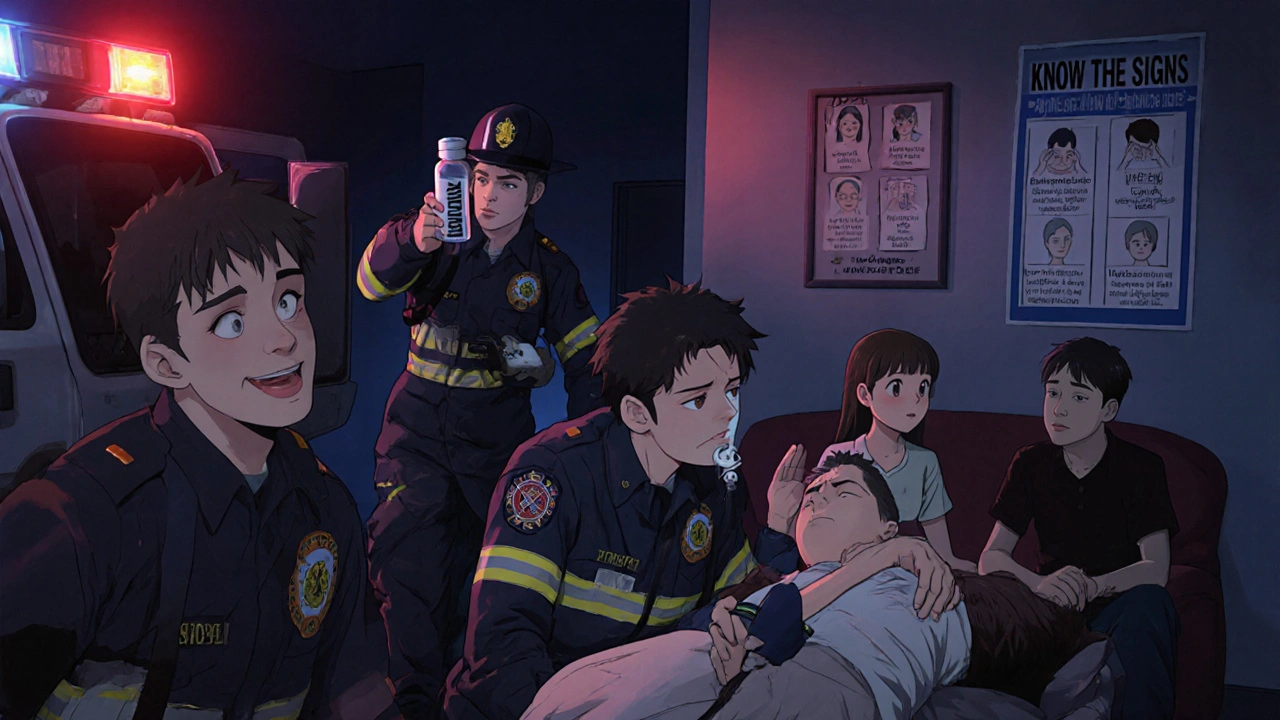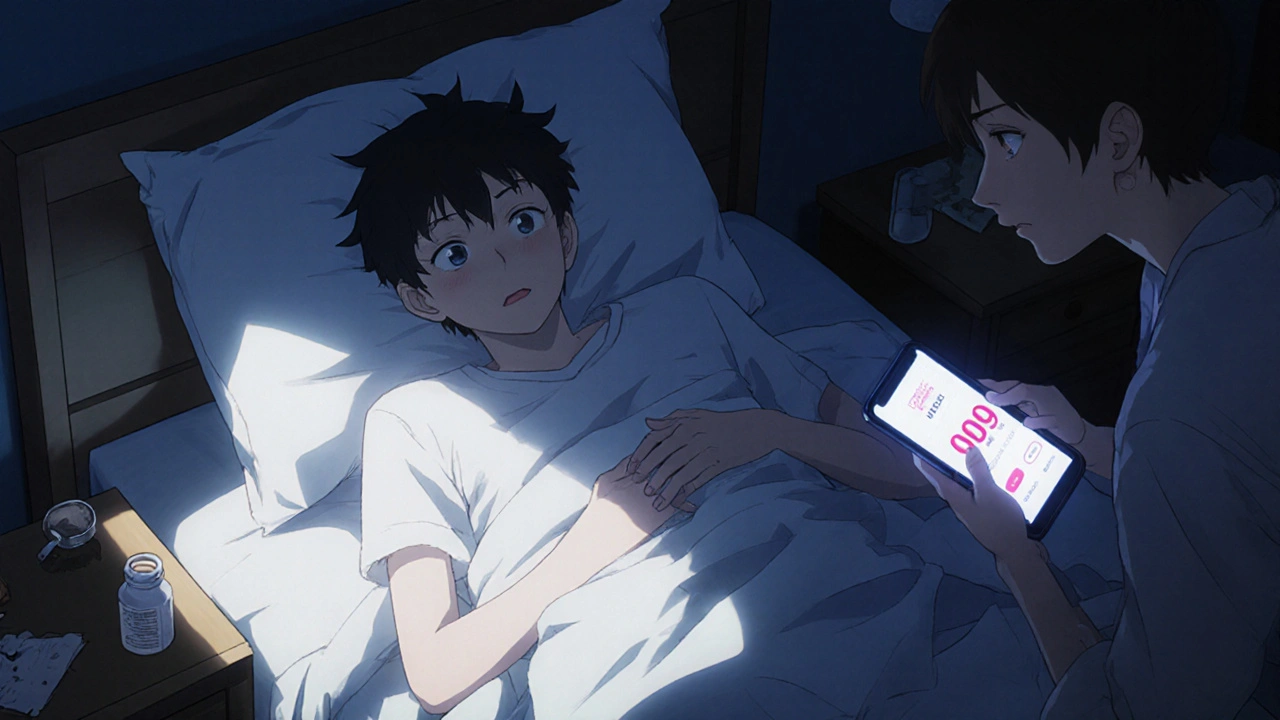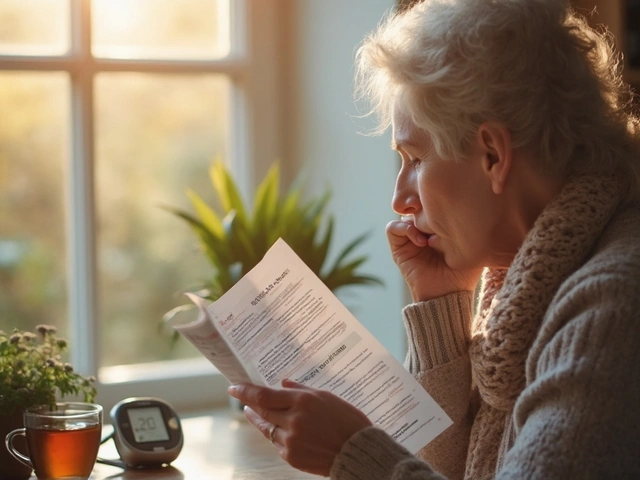Someone you care about takes a pill to help them sleep. They seem fine at first - maybe a little drowsy, maybe a little slow to answer. But then they stop responding. Their breathing gets shallow. Their lips turn blue. This isn’t just deep sleep. This is an overdose. And it can kill in minutes.
What Happens When Sedatives Overdose?
Sedatives and sleep medications - like zolpidem (Ambien), eszopiclone (Lunesta), temazepam (Restoril), alprazolam (Xanax), and even over-the-counter pills like diphenhydramine (Tylenol PM) - work by slowing down your brain and nervous system. That’s why they help you fall asleep. But when too much gets into your body, they don’t just slow you down. They shut you down.The central nervous system starts to fail. Breathing slows. Heart rate drops. Oxygen levels crash. Without help, the brain doesn’t get enough air. Within minutes, organs begin to shut down. In 2021, over 12,500 people in the U.S. died from benzodiazepine overdoses alone. Many of these deaths were preventable - if someone had recognized the signs early enough.
The Warning Signs: What to Look For
Recognizing an overdose isn’t about guessing. It’s about checking for clear, physical signs. Here’s what to watch for, in order of progression:- Unresponsiveness: Can they wake up? Try shouting their name. Shake their shoulder. Do a sternal rub - rub your knuckles hard on the center of their chest. If they don’t move, react, or open their eyes, they’re not sleeping. They’re overdosing.
- Slurred or incoherent speech: Their words sound thick, slow, or jumbled. This isn’t just tired talking. It’s a sign their brain can’t control muscle movement properly.
- Extreme drowsiness: They’re not just sleepy. They’re unconscious. Even loud noises or physical stimulation won’t bring them back.
- Slow, shallow breathing: Count their breaths for 30 seconds. Normal is 12-20 per minute. If they’re taking fewer than 8 breaths in a full minute, that’s a medical emergency. If they’re not breathing at all, time is running out.
- Cyanosis: Look at their lips, fingertips, and nail beds. If they’re turning blue or gray, their body isn’t getting oxygen. This is a late, dangerous sign.
- Cold, clammy skin: Their body temperature drops. Skin feels wet and icy to the touch. This means circulation is failing.
- Loss of coordination: They can’t stand, walk, or hold their head up. Movements are clumsy, like they’re drunk - even if they haven’t had alcohol.
- Vomiting: Especially if they’re unconscious. This can lead to choking. Don’t wait. Act now.
Some people mistake these signs for just being really tired. That’s deadly. A 2022 study found that 68% of bystanders waited too long because they thought the person was just sleeping deeply. Don’t make that mistake.
Different Drugs, Different Risks
Not all sedatives are the same. Knowing the type helps you understand the danger.- Benzodiazepines (Xanax, Valium, Klonopin): These are the most common. Overdose symptoms are mostly neurological - confusion, drowsiness, slow breathing. Vital signs like heart rate often stay normal until the very end. That’s why people think they’re fine. They’re not.
- Z-drugs (Ambien, Lunesta): Marketed as safer, but they carry the same risks. Overdose looks nearly identical to benzodiazepines. The FDA added a boxed warning in April 2023 after hundreds of deaths linked to misuse.
- Barbiturates (phenobarbital): Rare today, but still used in some cases. These are far more dangerous. Even small amounts can stop breathing. They’re more likely to cause death than benzodiazepines.
- Over-the-counter sleep aids (diphenhydramine): These aren’t harmless. High doses cause extreme drowsiness, dry mouth, blurred vision, urinary retention, and even hallucinations or seizures. A single 100mg tablet can be dangerous. A whole bottle? Fatal.
- Melatonin: This one’s different. Even at very high doses (like 240mg), it rarely causes breathing problems. The worst you’ll see is headache or nausea. If someone overdoses on melatonin, they’re not in immediate danger - but they still need help.
Combining these with alcohol or opioids is the fastest path to death. The CDC found that 23% of benzodiazepine overdose deaths in 2021 also involved fentanyl. Alcohol multiplies the effect. One drink with a sleeping pill can be enough to stop breathing.

What to Do Right Now
If you suspect an overdose, don’t wait. Don’t try to wake them with cold water. Don’t leave them alone. Don’t assume they’ll sleep it off.- Check responsiveness: Shout. Shake. Rub their chest. If no reaction, move to step two.
- Check breathing: Count breaths for 30 seconds. Multiply by two. If it’s below 12 per minute, call 999 immediately.
- Call emergency services: Say: “I think someone is overdosing on sleeping pills.” Give your location. Stay on the line.
- Start rescue breathing if needed: If they’re not breathing, tilt their head back, pinch their nose, and give one breath every 5 seconds. Don’t stop until help arrives.
- Do NOT give flumazenil: This is the only antidote for benzodiazepines - but it’s dangerous outside a hospital. It can trigger seizures in people who are dependent on the drug.
- Keep them on their side: This prevents choking if they vomit.
Every minute counts. Research shows that for every minute you delay calling for help, the chance of survival drops by 7-10%.
What You’ll See in the Hospital
Emergency teams will check oxygen levels, heart rate, and breathing. They may give oxygen through a mask. In severe cases, they’ll put in a breathing tube. They’ll monitor for seizures, low blood pressure, or heart rhythm problems.They won’t use flumazenil unless it’s absolutely necessary. Instead, they’ll support the body until the drug clears - which can take hours to days, depending on the medication. Some people need to stay in the hospital for observation.

Why This Keeps Happening
Overdoses aren’t always intentional. Many people take their prescribed dose, then get tired and take another. Or they mix it with alcohol because “it helps me sleep better.” Others take someone else’s pills because they ran out. A 2022 report from the National Poison Data System found that 72% of sedative exposure cases involved people under 40. Most happened at home.Doctors are prescribing less now - benzodiazepine prescriptions dropped 32% between 2012 and 2022. But misuse of existing prescriptions is rising. People don’t realize how dangerous these pills are. They think, “It’s just a sleeping pill.” But sleeping pills can kill you while you sleep.
How to Prevent It
- Never mix sedatives with alcohol or opioids. That combination is deadly.
- Take exactly what’s prescribed. No extra doses. No sharing.
- Store pills safely. Out of reach of children, teens, or others who might take them.
- Check expiration dates. Old pills can lose potency, leading people to take more.
- Know the signs. If you’re giving these meds to someone else - a parent, partner, or friend - learn what to look for.
- Keep a list of all medications. This helps emergency responders know what’s in the system.
Some pharmacies in California now hand out free overdose recognition cards. They show the signs in simple pictures. You can ask for one. Or print one online. Keep it by the medicine cabinet.
Final Thought: Don’t Wait for Perfect Signs
You don’t need to see all the symptoms. You don’t need to be sure. If someone is unresponsive and breathing slowly - even if they’re just “really tired” - call 999. It’s better to be wrong than to lose someone because you hesitated.Sedative overdoses don’t announce themselves with screams. They happen quietly. In bedrooms. In living rooms. At night. And by the time you realize something’s wrong, it’s often too late.
Know the signs. Act fast. Save a life.
Can you overdose on melatonin?
Yes, you can take too much melatonin, but it rarely causes life-threatening symptoms. High doses (like 240mg) may cause headaches, dizziness, nausea, or vivid dreams - but they don’t shut down breathing like prescription sedatives. Melatonin overdoses are uncomfortable, not deadly.
Is it safe to take sleep meds with alcohol?
No. Mixing sleep medications with alcohol is extremely dangerous. Both depress the central nervous system. Together, they can slow breathing to a stop. Even one drink with a sleeping pill can be fatal. This combination is involved in 41% of fatal sedative overdoses.
Can flumazenil be used at home to reverse an overdose?
No. Flumazenil is the only antidote for benzodiazepine overdoses, but it’s only safe to use in a hospital. Giving it at home can trigger seizures, especially in people who are dependent on the drug. Never attempt to use it outside medical supervision.
What’s the difference between a sleeping pill overdose and an opioid overdose?
Opioid overdoses usually cause pinpoint pupils, while sedative overdoses don’t. Sedative overdoses often keep vital signs like heart rate normal until late stages, making them harder to spot. Both cause slow breathing and unconsciousness, but the pupils and timing of collapse differ. In mixed overdoses (like opioids + benzodiazepines), these signs get blurred - so always assume the worst and call for help.
How long does it take for a sedative overdose to become fatal?
It can happen in under 30 minutes if breathing stops. Most deaths occur when people delay calling for help. The average bystander waits 47 minutes before calling 999, mistaking the symptoms for deep sleep. Once breathing drops below 8 breaths per minute, survival drops sharply with each passing minute.
Are newer sleep medications like Ambien safer than older ones?
No. Z-drugs like Ambien were marketed as safer alternatives to benzodiazepines, but they carry the same overdose risks. The FDA added a boxed warning in April 2023 after hundreds of deaths linked to misuse. They’re not safer - just newer.
What should I do if I find empty pill bottles next to someone who’s unconscious?
Call 999 immediately. Empty bottles are a key clue. Tell emergency responders what pills were found - even if you’re not sure. This helps them treat the overdose faster. Don’t wait to identify the pills. Time is critical.
Can someone recover from a sedative overdose without lasting damage?
Yes, if help comes quickly. Many people recover fully if they get oxygen and breathing support before brain damage occurs. But delays can lead to permanent brain injury, organ failure, or death. Quick action saves lives.





Comments (14)